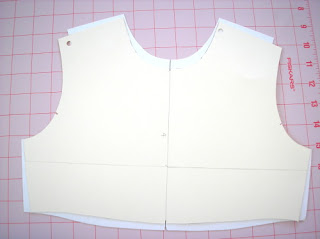Hello, I want to surprise my Grandsons with "hero" capes. What would be an average neck measurement for a 7 year? What would be an average neck measurement for an 11 year old? Thank you, Agnes Scales
I have received many questions about how to find the average neck measurement for children, especially infant children. The neck circumference measurement can be difficult to find for many reasons.
The 1939 Study
Ruth O'Brien, appointed by the Department of Agriculture and the U.S. Home Economics Department, created and executed an innovative body measurement study of children. As the study was developed, there were likely many discussions on what body measurements should be taken. The study report clearly states that some body measurements were excluded, despite the desire to not exclude anything. The reasons for exclusion varied. Consideration was given to the amount of time needed to measure each child. The more measurements taken, the longer it would take. Also remember, the study subjects were children. You can imagine that many children, especially the infants, would not tolerate a long measurement session. Then multiply that time with the need to measure thousands of children.
A decision was made to eliminate certain body measurements from the study, particularly for the infant size range. The excluded measurements were the neck base or circumference, hand width and length, and foot width and length. This decision has made it difficult to know the neck circumference for infants ever since.
Later Studies
Another body measurement study was conducted in the 1970's. This study was an anthropometric study to obtain body measurements that can be used for product design such as car seats, bicycles, etc. This study included hand width and length and foot width and length measurements. It did not include the neck circumference.
The ASTM D4910 chart has included a neck circumference measurement for infants for a long time, though it is not entirely clear how it was added. The ASTM charts have incorporated the SizeUSA study, which did measure the neck circumference for infants. In theory the measurements have some backing.
The British size study included the neck circumference measurement.
Where to find neck circumference measurements
Neck circumference measurements can be found on measurement standards available for purchase at astm.org. Search for these standards:
D4910 - Infants
D6860 - Boys, sizes 6-24
D6192 - Girls, sizes 2-20
D6829 - Juniors, size 0-19
Neck base/circumference measurements can be found on the withdrawn measurement standards for:
PS45-71 - Young men
PS36-70 - Boys
PS54-72 - Girls
My book the Essential Guide to Children's Clothing Sizes includes an infant size chart which contains a derived neck circumference measurement. The book also includes complete copies of the withdrawn measurement standards in one place. The withdrawn measurement standards are no longer easily available on the Internet.
Why the neck circumference measurement might be needed
In general, the neck circumference measurement is NOT needed to draft basic block patterns. If you look at any pattern drafting manual, the neck measurement is not used. Do not let the lack of this measurement stop you from moving forward.
However, there are times when the neck circumference measurement may be useful. Some products, like necklaces may need this measurement. But even there, it may not be needed. A designer should take the step to "try-on" the product.
Be careful of an over reliance on one specific body measurement. There are many variables in which that measurement may not match your child. If working on a project for a specific child, either measure the child or measure the neckline from a piece of clothing. A piece of clothing will get you close to what measurement will be needed.
Neck circumference and obesity
Neck circumference is now a screening diagnostic for childhood obesity. In the last few years a study was conducted to confirm that the neck circumference has a correlation with other body measurements, such as waist circumference, and to confirm obesity. The goal of the study was to confirm the relationship and use of neck circumference in diagnostic criteria for obesity. The study does acknowledge certain deficiencies such as small sample size in one geographic location. Still, the use of the neck circumference in this way seems logical. Likely doctors will start to use this body measurement in screenings in the future.























